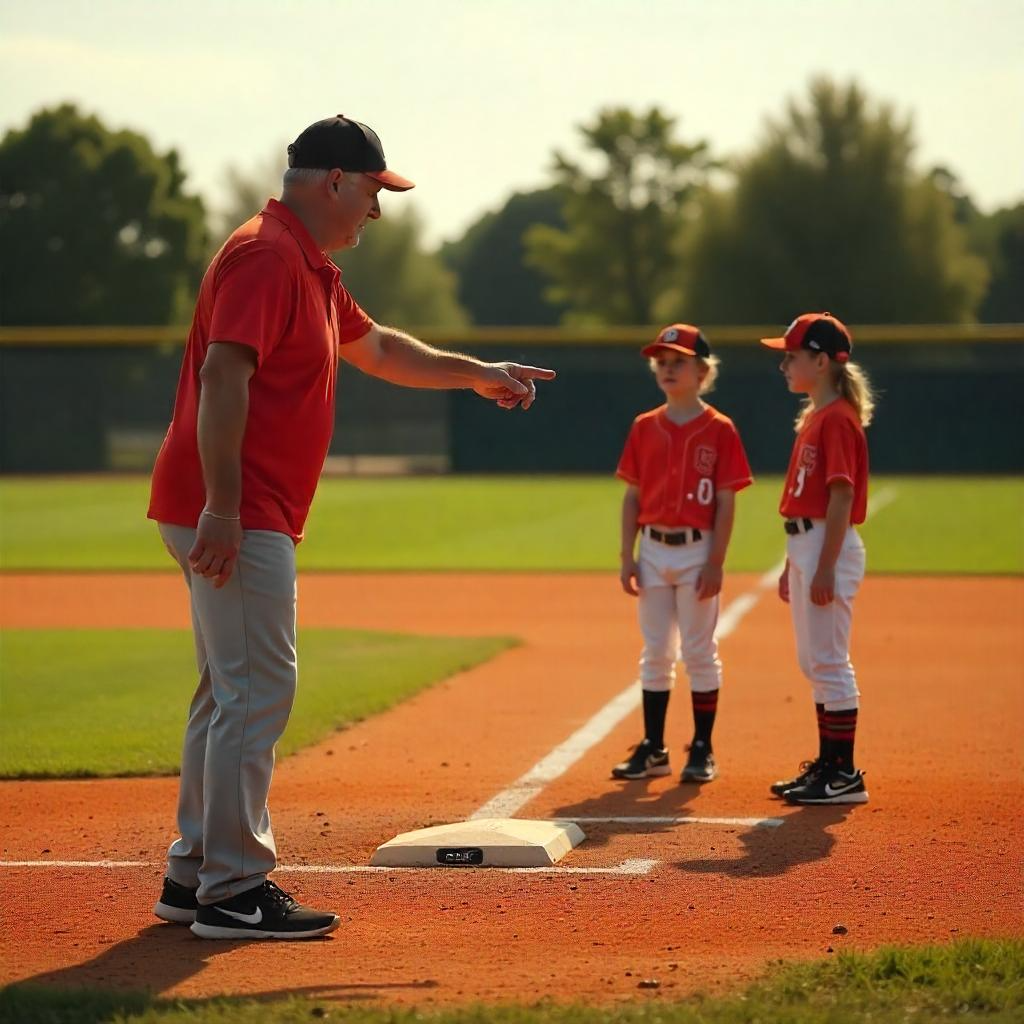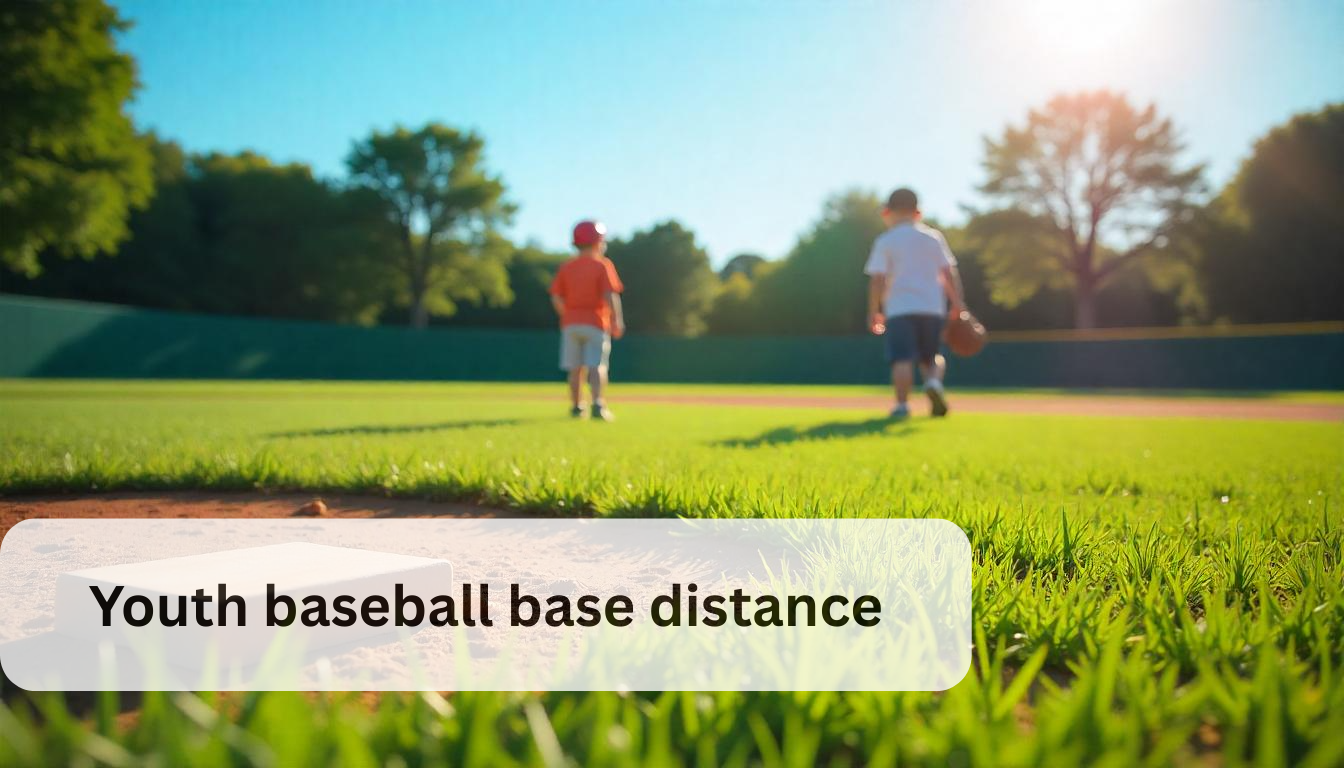Baseball is a game of precision, speed, and strategy, and for young players, understanding the various dimensions of the field is crucial for performance. One of the most important aspects to consider when designing a youth baseball field is the youth baseball base distance. This distance can significantly impact how kids learn the game and how they develop their skills over time. Whether you’re a coach, parent, or league organizer, understanding the youth baseball base distance by age is essential to creating a fair and challenging environment for players to thrive.
In this guide, we’ll explore the youth baseball base distance, covering different age groups, the relationship to other field dimensions, and how it affects the game. We will also dive into other relevant topics like 12u baseball field dimensions, little league pitching distance, and more, to give you a complete overview of youth baseball field sizes.
What is the Youth Baseball Base Distance?
The youth baseball base distance refers to the length between the bases on a baseball field. This distance, however, varies depending on the age group and league in question. For younger players, the base distance is typically shorter to accommodate their smaller physical stature and skill levels. As players grow older and their skills develop, on the other hand, the base distance increases to challenge them and better simulate the adult game.
Furthermore, the youth baseball base distance plays a significant role in how fast players can move between bases, which, in turn, impacts everything from stolen bases to infield plays. As a result, this distance influences not only game speed but also strategy and player development.
How Does the Youth Baseball Base Distance Vary by Age?
Different age groups have different base distances, ensuring that players are able to develop the skills necessary for their age and physical abilities. Here’s a breakdown of the typical base distances by age:

Base Distance for 8U Baseball Players (Under 8 Years Old)
For players in the 8u baseball field dimensions category, the bases are typically set at 60 feet apart. This shorter distance allows younger players to focus on learning basic skills like fielding, hitting, and running, without the added challenge of longer base distances. The shorter distance also keeps the game manageable, making it more fun and accessible for young players.
Base Distance for 10U Baseball Players (Under 10 Years Old)
As players get older, the distance increases. For 10u baseball field dimensions, the bases are generally set at 60 feet as well, but with some leagues adjusting to accommodate different skill levels. In leagues like Little League, the little league base distance for 10-year-olds may be slightly shorter in some cases. At this age, players start to develop a stronger understanding of the game, so the base distance provides more of a challenge compared to 8u leagues.
Base Distance for 12U Baseball Players (Under 12 Years Old)
The 12u baseball field dimensions typically increase to 70 feet between the bases. At this age, players have built up their stamina and running speed, and the longer distance requires more advanced base-running techniques. This increase in base distance also coincides with more complex strategies, as players begin to develop their competitive skills.
Base Distance for 14U and Older Players (Under 14 Years Old)
For players in the 14u baseball field dimensions category, the bases are generally set at 90 feet apart, mirroring the distance used in high school and adult baseball. The increased distance prepares players for the bigger challenges they’ll face as they transition to higher levels of the sport. This distance is key to ensuring players continue to develop in all aspects of the game, including base running, fielding, and overall game strategy.
Other Important Dimensions in Youth Baseball
While the youth baseball base distance is a critical aspect of the field setup, other dimensions also play a role in shaping the game for young players. Let’s take a look at some additional key measurements:
Little League Pitching Distance for Different Ages
The little league pitching distance varies based on the player’s age and the league type. Here are some typical distances:
8-Year-Old Players: At this age, players typically pitch from 46 feet.
10-Year-Old Players: The pitching distance remains 46 feet, aligning with the 10u baseball field dimensions.
12-Year-Old Players: The distance increases to 50 feet at this age.
14-Year-Old Players and Above: As players grow, the pitching distance increases to 60 feet 6 inches, similar to high school and adult baseball.
This pitching distance, combined with the base distance, helps balance the challenge for young players. In fact, the base distance influences how the game is played at every level. Why Base Distance Matters for Youth Players
The youth baseball base distance is more than just a number; it directly impacts how the game is played at every level. Here’s why it matters:
Game Speed and Strategy
The shorter the youth baseball base distance, the faster players can move between bases. In youth leagues, the emphasis is often on developing speed and learning to anticipate plays. Shorter base distances encourage more aggressive base running, but also increase the frequency of defensive plays, helping players develop their reaction times and decision-making skills.
Player Development
As kids grow older, they naturally become faster and stronger. Therefore, the base distance increases over time. A well-chosen base distance allows players to progress at a pace that’s comfortable for their current abilities. This gives them the space and time needed to develop their technique. For instance, players in 12u baseball leagues benefit from the increased base distance. It forces them to refine their skills, preparing them for more complex plays and faster reactions.
Safety
Setting the right base distance for each age group is essential for safety. A base distance that is too long for younger players can result in unnecessary fatigue and frustration, while a base distance that is too short for older players can lead to less challenging gameplay, diminishing the development of essential skills. The correct youth baseball base distance ensures a balance between challenge and safety.
The Role of Baseball Field Dimensions in Youth Development
Youth baseball field dimensions, including the base distance, are designed to support the developmental needs of players at different ages. As young athletes grow and develop, they benefit from the progressive nature of field dimensions, which match their increasing abilities. This gradual increase in difficulty mirrors the increasing level of competition and prepares players for higher levels of the game.

For example, a 12u baseball field with 70 feet between bases allows players to hone skills like lead-offs, sliding, and tagging, all of which are crucial as they move on to higher-level competition.
Frequently Asked Questions
How many feet is a 10U baseball field?
A 10U baseball field typically has bases set at 60 feet apart. This distance is standard for younger players, offering them an appropriate challenge while helping them develop essential baseball skills.
What is the distance for kid pitch baseball?
In kid pitch baseball, the distance between the pitcher’s mound and home plate is generally 46 feet for players under 10 years old. As players age, this distance increases, with 50 feet being common for 12U leagues.
How far are the bases at U15 baseball?
In U15 baseball, the bases are typically set at 90 feet apart, which is the same distance used in high school and adult baseball. This longer base distance reflects the increased skill and speed of players in this age group.
How far are bases in 10U baseball?
In 10U baseball, the bases are usually set at 60 feet apart. This distance is perfect for players who are refining their skills and learning more about the game’s strategies.
What are the base distances for Little League?
In Little League baseball, the base distance varies based on age. For 8U players, the distance is 60 feet, while for 10U and 12U players, it is typically 60 feet and 70 feet, respectively. Older players in Little League may have base distances set at 90 feet.
What is the pitching distance for Little League baseball?
For 8-year-old players, the pitching distance is generally 46 feet. For 12-year-old players, the pitching distance increases to 50 feet. As players get older, the pitching distance gradually extends to 60 feet 6 inches.
How far are the bases in a youth baseball league?
In youth baseball leagues, the base distance varies by age. Younger players (such as in 8U baseball) typically play on fields with 60 feet between bases, while older players (like in 12U and 14U baseball) will have bases set at 70 feet and 90 feet, respectively.
How far apart are the bases for 12U baseball?
For 12U baseball, the bases are set at 70 feet apart. This distance helps players continue to develop their skills in a more competitive setting as they transition to higher levels of play.
What are the field dimensions for 12U baseball?
The field dimensions for 12U baseball typically include 70 feet between bases and a pitching distance of 50 feet. These dimensions provide a balance between challenge and player development at this stage of youth baseball.
Conclusion
Understanding the youth baseball base distance is key to creating a successful and engaging experience for young players. By adjusting the base distance according to the player’s age, you ensure that the game remains challenging yet accessible. Whether you’re setting up a 10u baseball field or preparing a field for 12u baseball players, these dimensions help foster the development of fundamental skills while ensuring the game remains fun.
For coaches, parents, and league organizers, knowing the right youth baseball base distance for each age group allows you to tailor the game to the needs of young athletes and ensure their long-term growth in the sport.
If you’re looking to set up or improve your own youth baseball field, keep these key distances in mind and give your players the space they need to develop and thrive. The right field dimensions can make all the difference in their love for the game and their success on the field.





